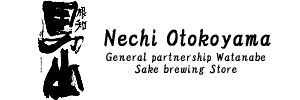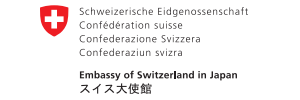October 20, 2013
Day 17 - Hiraizumi
Hiraizumi (平泉) was the seat of the "Northern branch" of the Fujiwara family, the most powerful clan in Japan during the Heian Period (794-1185). The city was once a cultural and political center, but it fell from prominence at the dawn of the new era of the Kamakura Period (1192-1333).
Hiraizumi has several cultural properties and historic monuments that reflect its past importance. Multiple temples and other sites, including Chusonji and Motsuji, have been recognized as UNESCO World Heritage Sites in 2011.

|

|
|
Hiraizumi
 Kawai! Kawai!
Today we started off at Hiraizumi station. Unfortunately it was raining quite a lot, but anyway... At the station I met my first fellow walker of the day, Takeuchi-san who gave me the sweetest card!
We took the bus to Takkoku no Iwaya, on the southern outskirts of town where we met up with another fellow walker - Nemoto-san who I had already met in Miyako. Since she lives only 10 minutes away she decided to come and walk with me, even in the rain, which was very kind.
It's a remarkable temple. It is in fact a blend of a buddhist temple and of a shinto shrine. Built a very long time ago, it is nestled in the side of a cliff that hangs majestically over it, shielding it -and us- from the rain.
 The entrance of Takkoku no Iwaya The entrance of Takkoku no Iwaya
 The wonderful temple built in the side of a cliff The wonderful temple built in the side of a cliff
 Because I like moss! Because I like moss!
We had a quick look around and also went closer to the cliff where one can see a huge Buddha statue, 15m high. However, with the passing of centuries everything except for the head has unfortunately been eroded. You can see a bit of the huge shoulders of the statue and imagine the rest. Very impressive.
 What's left of the great Buddha carved into the cliff What's left of the great Buddha carved into the cliff
From there we walked about 1h to Motsuji temple where we had a quick soba lunch before meeting Konno-san, our guide for the day, who gave us a great and detailed tour of Motsuji. I learned that in the temple grounds is the oldest Japanese garden of the world, designed in the 12th century. It has recently been restored to its old splendour using a 12th century book on Japanese garden design to make sure that it would be 100% accurate. This is why the temple became a Unesco World Heritage Site. There are apparently 4 more of these gardens in Hiraizumi but up to now only one other has been restored. We’ll have to come back to see the other ones!
 The \"ocean\" component of the wonderful 12th century garden of Motsuji temple The \"ocean\" component of the wonderful 12th century garden of Motsuji temple



After that we continued our walk to Chusonji temple which is in fact a huge cluster of temples built on a mountain. It was raining quite hard at that time but it didn’t really matter - the rain and the mist added to the mystique of the place and in my opinion made it even more special a place.
 One of the many sub-temples of Chusonji One of the many sub-temples of Chusonji
 The mystical forests The mystical forests
 Crysanthemum contest and festival at Motsuji temple Crysanthemum contest and festival at Motsuji temple
And now, after a couple of delicious Senbei biscuits from Nakashima-san, I am off to enjoy the great onsen the Musashibo hotel has to offer - the best part of any rainy day in Japan!
 The walkers! Well done! The walkers! Well done!
|
Today's Walk: Between historical sites of Hiraizumi
 Join this walk
Join this walk
The day's walk starts at Takkoku no Iwaya, an interesting temple constructed partially in the rock face of a cliff. The journey leads through some nice rural landscapes and takes us to Motsuji Temple and its beautiful Buddhist pure land garden. The pleasurable walk continues past rural neighborhoods and through the wooded approach to Chusonji Temple, before ending at the temple's famous Konjiki-do (Golden Hall).
|
Date
|
October 20, 2013
|
|
Start Time
|
10:40
|
|
Start
|
Takkoku no Iwaya
|
|
Goal
|
Chusonji Temple
|
|
Distance
|
8 kilometers (about 4-5 hours)
|
|
Terrain
|
Mostly on easy-to-walk pedestrian paths through neighborhoods and sidewalks beside roads. At Chusonji Temple, ascending a combination of uphill paths and stairs is required to get to the temple's various buildings and Konjiki-do.
|
|
Weather
|
Average daytime high: 21 degrees Celsius (70 degrees Fahrenheit)
Average nighttime low: 11 degrees Celsius (52 degrees Fahrenheit)
 Weather Forecast for Morioka
Weather Forecast for Morioka
|
|
Access
|
From Hiraizumi Station, take a local bus which departs for Takkoku no Iwaya (達谷窟) at 10:25, 10:45, 11:05, 11:30, 12:20, 13:05, 14:00, 14:45. The one way ride takes 10 minutes and costs 380 yen. The 10:25 departure arrives at Takkoku no Iwaya in time for today's walk.
Hourly buses connect Chusonji with Ichinoseki Station (25 minutes, 350 yen) via Hiraizumi Station (5 minutes, 310 yen). A taxi ride from Chusonji to Hiraizumi Station costs less than 1000 yen.
Rental bicycles are also suitable for exploring Hiraizumi. A rental shop at Hiraizumi Station charges 500 yen for two hours, 200 yen per additional hour or 1000 yen for the entire day. A second rental shop, a few steps from the station, additionally offers electric bicycles at a slightly higher fee.
 More details on how to get to Hiraizumi
More details on how to get to Hiraizumi
|
|
Lodgings
|
There are only a couple of accommodations around Hiraizumi. More lodging choices can be found in nearby Ichinoseki.
 Search hotels in Hiraizumi through
Booking.com or Japanican
Search hotels in Hiraizumi through
Booking.com or Japanican
 Search hotels in Ichinoseki through
Agoda, Booking.com or Japanican
Search hotels in Ichinoseki through
Agoda, Booking.com or Japanican
|
 Join this walk
Join this walk
|
|
The deadline for answering the quiz question for day 17 has passed.
Hiraizumi's Motsuji Temple is known as one of only a few temples in Japan that preserve parts of an ancient Pure Land style garden. Which of the following other temples also preserve parts of an ancient Pure Land style garden?
|
91%
|
Byodoin (Uji)
| |
|
0%
|
Kiyomizudera (Kyoto)
| |
|
7%
|
Kofukuji (Nara)
| |
|
0%
|
Komyozenji (Dazaifu)
| |
|
2%
|
None of the above
| |
|
The correct answer is: Byodoin (Uji)
Depicted on the 10 yen coin, Byodoin Temple in Uji is another of only a small number of temples that preserve parts of an ancient Pure Land style garden.
Current Standings: (after 30 days)
 More about the quiz
More about the quiz
|
|












|















